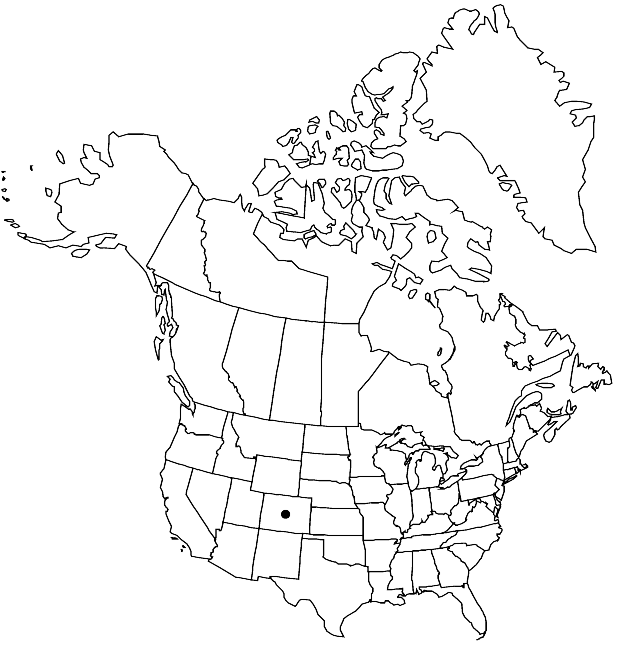Physaria obcordata
J. Arnold Arbor. 64: 495, fig. 1. 1983.
Perennials; caudex branched, (thick, covered with persistent, overlapping leaf-bases); densely (silvery) pubescent, trichomes (stellate-scalelike), several-rayed, rays fused (webbed) to tips. Stems several from base, erect to decumbent, (unbranched, fertile stems from among basal leaves), 1.2–1.8 dm. Basal leaves (erect, not rosulate); blade broadly oblanceolate, 4–8 cm, margins entire or shallowly sinuate-dentate, (apex acute). Cauline leaves: (proximal petiolate); blade narrowly lanceolate, similar to basal in size, (distal with cuneate base), margins entire. Racemes loose, (elongated in fruit). Fruiting pedicels (widely spreading to recurved), 1–1.5 cm. Flowers: sepals (greenish yellow), elliptic, often broadly so, 4.8–7.1 mm; petals oblanceolate, 6.8–9.8 mm. Fruits (usually pendent), slightly didymous apically, obcordate, slightly inflated, 4–7 × 3–6 mm, (papery, basal sinus absent, apical sinus evident to nearly absent); valves (retaining seeds after dehiscence), pubescent; replum broadly obovate to suborbicular, 4–5 mm, as wide as or wider than fruit, margins entire; ovules usually 4 (rarely 6–8) per ovary; style (2.5–) 3–4 (–5) mm. Seeds plump.
Phenology: Flowering May–Jun.
Habitat: Steep slopes, fine chiprock, shaley hillsides
Elevation: 1800-2300 m
Discussion
Of conservation concern.
Physaria obcordata is known from the Thirteenmile Creek Tongue and the Parachute Creek Member of the Green River Formation. It is in the Center for Plant Conservation’s National Collection of Endangered Plants.
Selected References
None.
Lower Taxa
No values specified."not" is not a number. "elongated" is not a number."thick" is not a number."dm" is not declared as a valid unit of measurement for this property.
